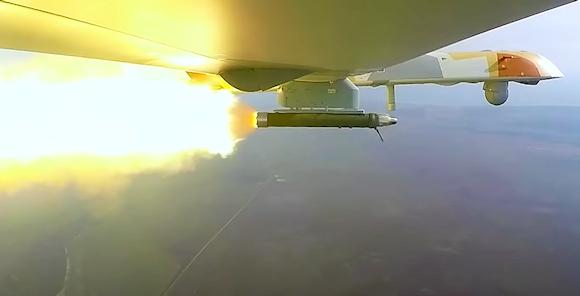Starting from February 24, 2022, the eyes of the whole world are focused on the war that is taking place in Ukraine and which, for the moment, is opposing the complex of the Armed and Security Forces of the Republic of Ukraine on the one hand to the compound alliance by the Armed Forces of the Russian Federation and the Unified Forces of Novorossiya (i.e. the joint army of the so-called Donetsk People's Republic and Lugansk People's Republic). Beyond its inhuman violence and crudeness, the conflict has once again drawn attention, both from experts and the general public, to the armaments used by the warring parties, as happens in every major international conflict.
In starting this new series called "Russian-Ukrainian War Weapons", we will talk today about a subject that is not very well known but which is very quickly acquiring importance literally on the battlefield: the use of drones by the Russian Armed Forces.
Contrary to what one might be tempted to think, Russia's experience with drones does not go back to yesterday. The Soviet Union already began experimenting with the use of drones for military purposes by creating a series of interesting models, some of which are still in service today in the ranks of the air forces of a number of countries including Russia and Ukraine (in the following photo a Tu-141).
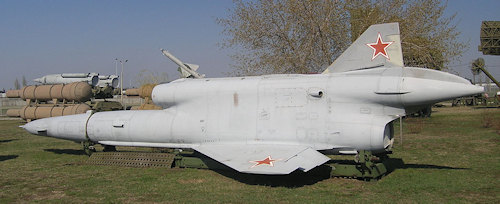
It is true that after the fall of the Soviet Union, the economic crisis and the general chaos that characterized Russia in the 90s, meant that even the development programs of UAV technology, which even in the last years of the USSR's life they were giving very promising signals, they literally went into oblivion and the whole "sector" entered a phase of prolonged "eclipse" that lasted until 2008.
In that year the Russians were engaged, alongside their allies in Abkhazia and South Ossetia, in a short but bloody 12-day war against Georgia.
Although the numerical preponderance and operational experience (the Russian forces engaged in that war belonged to veteran units of the conflict in Chechnya) ensured that the Russians and their allies would very quickly get the better of the compact and well equipped but poorly guided Georgian Armed Forces , however, they were remarkably impressed by the equipment captured from their enemies, particularly the Israeli-made UAVs.
This is why, in the aftermath of the end of the conflict, programs relating to the development of unmanned aircraft resumed, both by exploiting national technologies and by importing Israeli technology, which was then considered the most advanced in the sector together with that of the United States.
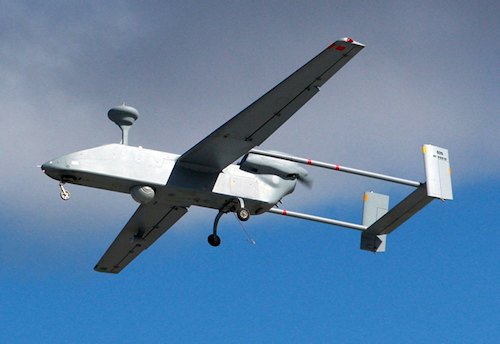 The result of the Russian-Israeli negotiations was the signing of a contract which provided for the licensed production of the IAI UAV between 2011 and 2016. Searcher II, serving with the Israeli Air Force as a successor to the previous Tadirans M and IAI Scout. Under the contract, Israel Aerospace Industry (IAI) would supply the components which would then be assembled in Russia at Ekaterinbug's UZGA. In the aforementioned period, Israel supplied kits for the production of 30 "systems" each consisting of 3 units, for a total of 90 UAVs renamed "Forpost" by the Russians (photo). When Israel finally gave in to international pressure and decided to stop supplies in 2016, Russia continued production of the Forpost independently and with components developed ad hoc by Russian industries.
The result of the Russian-Israeli negotiations was the signing of a contract which provided for the licensed production of the IAI UAV between 2011 and 2016. Searcher II, serving with the Israeli Air Force as a successor to the previous Tadirans M and IAI Scout. Under the contract, Israel Aerospace Industry (IAI) would supply the components which would then be assembled in Russia at Ekaterinbug's UZGA. In the aforementioned period, Israel supplied kits for the production of 30 "systems" each consisting of 3 units, for a total of 90 UAVs renamed "Forpost" by the Russians (photo). When Israel finally gave in to international pressure and decided to stop supplies in 2016, Russia continued production of the Forpost independently and with components developed ad hoc by Russian industries.
This new "nationalized" version is known as Forpost R. It carries a Russian-made gyroscopic optronic system; these devices were designed by Ural Optical & Mechanical Plant (division of Schvabe holding, Rostec Corporation) and NPP Airborne & Marine Electronics. The optronic payload is 32 kg and includes the unit of imaging temperature with 3-5 micron cooled matrix, the television unit, the rangefinder / laser illuminator HTEB.461321.011 produced by Quantum Optics, a datalink system and a software developed in Russia.
Improving the performance of the basic version which has a range of 250 km, the Forpost R it boasts a range of 450km, can fly at a maximum altitude of 6km and has a flight duration of 18 hours. The increase in performance was achieved thanks to the introduction of the nationally designed APD-85 piston engine. The drone has a maximum weight of 500kg and can carry a payload of 120kg. Not only that, starting from 2019, the Russians have also introduced an armed variant of the Forpost R called Forpost R-UCAV, so far entered into service in at least 10 specimens and equipped with two attachment points to release precision ammunition.
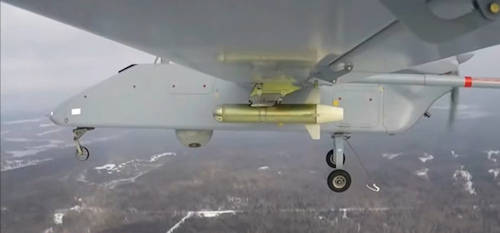 The weapons that until now have been installed on the Forpost R-UCAV are the launchable aviation variant of the 9M133M anti-tank missile Kornet-D (improved version of 9M133M Kornet-M, in turn improved version of 9M133 Kornet base), called X-BPLA, the guided bombs of the KAB-20 series (photo) and different types of free-fall bombs.
The weapons that until now have been installed on the Forpost R-UCAV are the launchable aviation variant of the 9M133M anti-tank missile Kornet-D (improved version of 9M133M Kornet-M, in turn improved version of 9M133 Kornet base), called X-BPLA, the guided bombs of the KAB-20 series (photo) and different types of free-fall bombs.
The Kornet-D is a laser-guided anti-tank missile that can be equipped with a thermobaric or HEAT warhead arranged in tandem. The envelope radius is around 8-10 km and is capable of drilling from 1.100 to 1.300 mm of homogeneous rolled steel (RHA) with ERA protection applied.
As for the KAB-20 bombs, they are part of the larger family of bombs known as "KAB", an acronym that stands for "Korrektiruemaya Aviatsionnaya Bomba" (translated as "guided aerial bomb"), while the "20" represents the weight in kg.
The KAB-20 family of bombs was developed by the Central Scientific Reserch Institute of Chemistry and Mechanics "Dmitry Mendeleev" in Moscow and has several variants characterized by different guidance systems, such as the laser-guided KAB-20L and the KAB-20S a satellite guidance, each available with different warheads: demolition, penetration or thermobaric. Since the beginning of the invasion of Ukraine, the Russians have employed the Forpost, Forpost R and Forpost R-UCAV in surveillance missions, reconnaissance, damage adjustment, artillery fire adjustment and attack against targets of opportunity, and it is to be expected that, as escalation continues, we will see such drones increasingly present in the skies above battlefields.
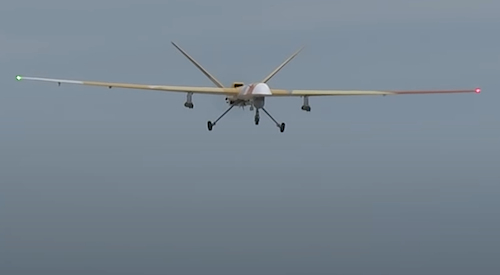 Another Russian drone that was intensively used in the Ukrainian war theater was the Kronshtadt Orion (photo + opening image), however while the Forpost was born as a reconnaissance UAV on which an armed version was then developed, the Orion it was immediately conceived also with the characteristics of a UCAV. Although the development ofOrion started in 2011, the drone took off its first flight only in 2016 and, after a long period of tests culminating in the deployment in Syria of the previously assembled prototypes, it was finally declared operational in 2019. Since then the drone has been was produced at the rate of 30 units a year so there are currently around 60 in service. During the Syrian operational parenthesis, the Orion they have been used in photographic reconnaissance, SIGINT / COMINT and actual attack missions. Being able to carry a payload of 200 kg, theOrion it is much more performing than the Forpost R-UCAV and is equipped with four attack points for as many bombs.
Another Russian drone that was intensively used in the Ukrainian war theater was the Kronshtadt Orion (photo + opening image), however while the Forpost was born as a reconnaissance UAV on which an armed version was then developed, the Orion it was immediately conceived also with the characteristics of a UCAV. Although the development ofOrion started in 2011, the drone took off its first flight only in 2016 and, after a long period of tests culminating in the deployment in Syria of the previously assembled prototypes, it was finally declared operational in 2019. Since then the drone has been was produced at the rate of 30 units a year so there are currently around 60 in service. During the Syrian operational parenthesis, the Orion they have been used in photographic reconnaissance, SIGINT / COMINT and actual attack missions. Being able to carry a payload of 200 kg, theOrion it is much more performing than the Forpost R-UCAV and is equipped with four attack points for as many bombs.
During the operations of the current Russo-Ukrainian War, when employed in attack missions, theOrion used the aforementioned X-BPLA missile, the guided bombs of the aforementioned KAB-20 family, but also those of the KAB-25 and KAB-50 family. In addition to these devices classified as "intelligent", the Orion Russians also used a large range of free-fall bombs among which the OFAB-100-120 weighing 100 kg should be mentioned. In general, thanks to the larger size, theOrion it has proved to be a performing weapon system capable of obtaining double results compared to the Forpost R-UCAV, but in any case it will need the integration of precision ammunition with even higher characteristics if it is to compete on par with the Turkish-made Baykar drones Bayraktar tb2 capable of launching MAM-C, MAM-L and in perspective MAM-T precision ammunition.
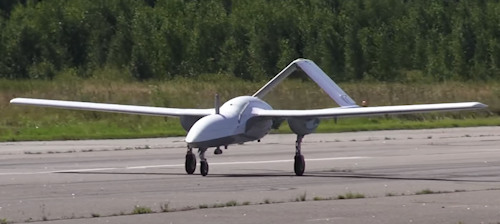 It is by no means certain that the skies of Ukraine will ever see the appearance of the last Russian UCAV to date into service, the Luch Korsar (photo). The result of the collaboration between OKB Luch and Ruselectronics, the Mouse benefited from a development period that lasted over 9 years and culminated in experimental use in the Syrian theater of war (exactly like theOrion). According to official sources, the operational use has given excellent results so as to push the Russian Armed Forces to order a substantial number not only for the Ground Forces, but also for the Navy with entry into service scheduled for 2018. Yet, despite 4 years have passed since the planned entry into service, it is not at all clear how many specimens of the corsair have been produced and whether the Ground Forces and the Navy have actually created ad hoc units equipped with what the specialist press has described as an extremely promising model and, it seems, much more performing when compared to the American RQ-7 Shadow and to the Turk Baykar Bayraktar tb2.
It is by no means certain that the skies of Ukraine will ever see the appearance of the last Russian UCAV to date into service, the Luch Korsar (photo). The result of the collaboration between OKB Luch and Ruselectronics, the Mouse benefited from a development period that lasted over 9 years and culminated in experimental use in the Syrian theater of war (exactly like theOrion). According to official sources, the operational use has given excellent results so as to push the Russian Armed Forces to order a substantial number not only for the Ground Forces, but also for the Navy with entry into service scheduled for 2018. Yet, despite 4 years have passed since the planned entry into service, it is not at all clear how many specimens of the corsair have been produced and whether the Ground Forces and the Navy have actually created ad hoc units equipped with what the specialist press has described as an extremely promising model and, it seems, much more performing when compared to the American RQ-7 Shadow and to the Turk Baykar Bayraktar tb2.
Russia has other advanced UCAV models in different stages of development, such as: the Mikoyan Skat, the Sukhoi Okhotnik-B, the Kronshtadt Helios Orion 2, Sirius and Grom, however it can be said with an absolute degree of certainty that these models will never be used in the current conflict in Ukraine because their stage of development is to be considered "immature" and they still need years before they can be declared operational and ready for mass production.
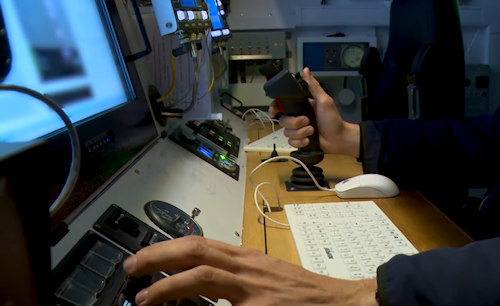 On balance, as far as the UCAV side is concerned, Russia will continue to fight this war by relying only on two models of UCAV: the Forpost R-UCAV el 'Orion. So far both drones have been used intensively in their double role of reconnaissance and attack, obtaining appreciable results which, although to be considered absolutely not decisive as regards the tactical or strategic dimension, will still serve as a test bed for what will be the future developments of the UCAV weapon of Moscow.
On balance, as far as the UCAV side is concerned, Russia will continue to fight this war by relying only on two models of UCAV: the Forpost R-UCAV el 'Orion. So far both drones have been used intensively in their double role of reconnaissance and attack, obtaining appreciable results which, although to be considered absolutely not decisive as regards the tactical or strategic dimension, will still serve as a test bed for what will be the future developments of the UCAV weapon of Moscow.
Quite different is the discourse of the reconnaissance UAVs which, although fugitives in the very early stages of the conflict, are now seeing a very massive use that is proving decisive in the great battles of the Donbass area and southern Ukraine.
The use of reconnaissance UAVs over the skies of Ukraine is not something of yesterday, given that since 2014 the Ukrainians have recorded a constant presence of unmanned aircraft from their bulky neighbor especially along the so-called "Contact Line" (also defined “Zelensky Line”) by shooting down several belonging to practically all the models gradually introduced into service by the Russian Armed Forces.
Over the years, and even more since February until now, the Russians have used in large numbers all types of reconnaissance drones in their possession: from the Zastava, Russian copies of the IAI Bird Eye 400 Israelis, to the Eleron-3SV medium-sized, from small Takhion e Tipchak up to the drones of the series Grenade which, starting from the basic model Grenade-1 they then move on to Grenade-2 and to Grenade-4. But the reconnaissance UAV that has become the very synonym of the use of drones by the Russians in this war and not only was undoubtedly theOrlan-10 (next photo).
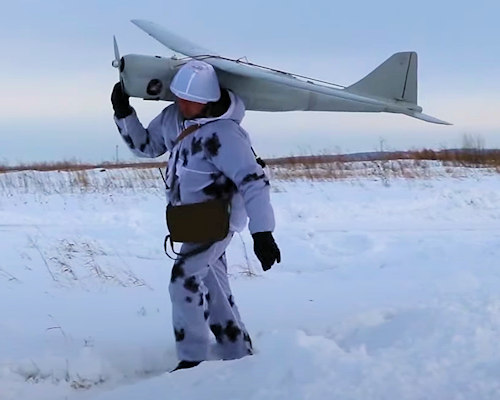 Entered service in 2010, theOrlan-10 is a medium-sized UAV characterized by a very low cost and suitable for mass production and, over the years, the Russians have introduced at least 11 variants suitable for specific missions so that, in addition to the Armed Forces, it has also been adopted by the 'EMERCOM, the Emergency Service (the Russian equivalent of the Italian Civil Protection). To ensure a smooth and prompt production, the Russian authorities initially opted for the assembly of components of foreign origin such as: Ublox Neo-M8 positioning systems of Swiss origin and Simcom Mobile IMEI of Chinese origin, Hyperian Atlas servo actuator also Chinese, Saito 40 CC engine of Japanese origin and communication systems of US origin. Even in this case, however, with the progressive worsening of international sanctions after 2014, the Russians have tried to focus more and more on the national production of sub-components, so much so that, in 2020, they announced the entry into service of a completely indigenous variant equipped with on the other hand, a laser designator capable of further increasing the accuracy of laser aiming ammunition fired from artillery or dropped from aircraft.
Entered service in 2010, theOrlan-10 is a medium-sized UAV characterized by a very low cost and suitable for mass production and, over the years, the Russians have introduced at least 11 variants suitable for specific missions so that, in addition to the Armed Forces, it has also been adopted by the 'EMERCOM, the Emergency Service (the Russian equivalent of the Italian Civil Protection). To ensure a smooth and prompt production, the Russian authorities initially opted for the assembly of components of foreign origin such as: Ublox Neo-M8 positioning systems of Swiss origin and Simcom Mobile IMEI of Chinese origin, Hyperian Atlas servo actuator also Chinese, Saito 40 CC engine of Japanese origin and communication systems of US origin. Even in this case, however, with the progressive worsening of international sanctions after 2014, the Russians have tried to focus more and more on the national production of sub-components, so much so that, in 2020, they announced the entry into service of a completely indigenous variant equipped with on the other hand, a laser designator capable of further increasing the accuracy of laser aiming ammunition fired from artillery or dropped from aircraft.
It is not clear exactly how many Orlan-10 have been produced so far. Russian sources speak of up to 1.500 "systems" produced and integrated into the structures of the Perhaps Armed in the period between 2010 and 2015. But be careful! It should be noted that the "systems" in this case are made up of groups of 5 drones, which gives a theoretical total of 7.500 Orlan-10 produced in the first 5 years. Given that the production of the UAV did not stop in 2015, having in fact continued until today; this number has meanwhile increased to reach 18.000 drones if the quotas of 300 “systems” produced every single year according to various Russian and international sources were confirmed. To tell the truth, these numbers should not come as a surprise given that the declared goal of the upper echelons of the Russian military world when undertaking the production of theOrlan-10, was to equip “Every single regiment of the Ground Forces of its own integrated reconnaissance core based on three systems (so 15 drones in all) made up of the Orlan-10 ".
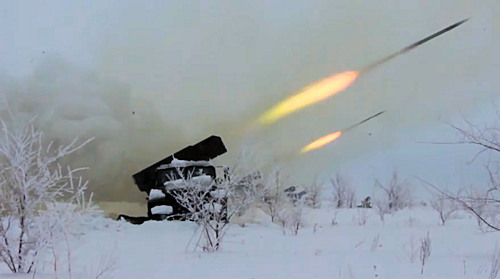 Regarding operational use, the Orlan-10, as well as other reconnaissance UAVs of all types and sizes are used essentially to fulfill three missions:
Regarding operational use, the Orlan-10, as well as other reconnaissance UAVs of all types and sizes are used essentially to fulfill three missions:
- first: surveillance missions for advancing Russian columns and along the front line in order to prevent attacks by Ukrainian forces;
- second: reconnaissance missions along enemy lines and in depth, especially to identify highly paying targets in support of air raids or Spetsnaz attacks;
- third: assisting the artillery batteries in fire missions both to increase the accuracy of unguided projectiles and to make the most of guided ones.
This last type of operational use deserves a special focus because it represents the most important by far. Two of the elements that had most impressed foreign observers during the first month of the war were the low use of artillery by the Russians and the very small presence of their UAVs in the skies above the battlefields.
Starting from the beginning of April, with the strategic retreat and the subsequent "narrowing" of the battlefield, the Russians have completely revolutionized their combat tactics, opting for a methodical advance, now slower now faster, in function of the enemy resistance encountered, constantly supported by a massive artillery barrage. In this context, the contribution of the Russian reconnaissance UAVs, and in particular the Orlan-10, proved to be crucial. In fact, despite the fact that artillery (especially in Russia) has always been rightly defined "the queen of the battlefields" it is also necessary to remember that it is also characterized by an intrinsic degree of imprecision.
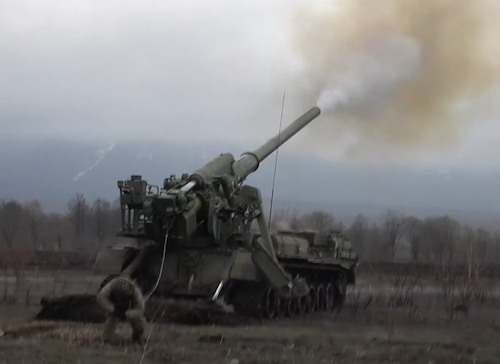 In fact, within 10 km, all the artillery pieces are able to place their shots with a very high precision. However, as the distance increases, the accuracy decreases. This is due to a series of factors which are both technical and environmental in nature and which we will not be investigating here because this is not the subject of this analysis. For example, it is true that, nominally, the very powerful 2S7 self-propelled gun pawn (photo), with a fire mouth characterized by a diameter of 203 mm, is credited with a maximum range between 37,5 and 47,5 km depending on the operational assets, but it is equally true that the more the targets to hit are near the maximum range, the lower the chances that the bullets fired by it may fall nearby (this is precisely "accuracy"). There are even tables, different according to the artillery system taken into consideration, which highlight this progressive decrease in accuracy.
In fact, within 10 km, all the artillery pieces are able to place their shots with a very high precision. However, as the distance increases, the accuracy decreases. This is due to a series of factors which are both technical and environmental in nature and which we will not be investigating here because this is not the subject of this analysis. For example, it is true that, nominally, the very powerful 2S7 self-propelled gun pawn (photo), with a fire mouth characterized by a diameter of 203 mm, is credited with a maximum range between 37,5 and 47,5 km depending on the operational assets, but it is equally true that the more the targets to hit are near the maximum range, the lower the chances that the bullets fired by it may fall nearby (this is precisely "accuracy"). There are even tables, different according to the artillery system taken into consideration, which highlight this progressive decrease in accuracy.
To overcome this problem, starting from the Second World War and throughout the Cold War up to the present day, the Soviets first and then the Russians adopted the practice of placing large masses of artillery on the battlefield on narrow fronts and giving more "Power" to numbers by deploying guns of ever greater dimensions, capable of firing projectiles with increased destructive potential. Exactly as in the case of aviation, the introduction of intelligent laser-guided ammunition has made it possible to make artillery bombardment much more lethal and less expensive, especially when accompanied by the presence on the ground of FAC (Forward Air Controller) which, mixed to the advancing forces, they identify the targets to be hit for the benefit of both artillery and fixed-wing and rotary-wing aircraft.
The Russians were no less than Western countries in applied research to the production of guided projectiles by developing: the KM-120 8 mm mortar shells Spruce, 120 mm mortar shells Kilotov-2 and 122 mm artillery shells Kilotov-2M, the 152 mm artillery shells 30F38 santimeter and those of 155 mm 30F75 Santimer-M, 152/155 mm 2K25 artillery shells Krasnopol, 2K25M Krasnopol-M and KM-1M Krasnopol-M2.
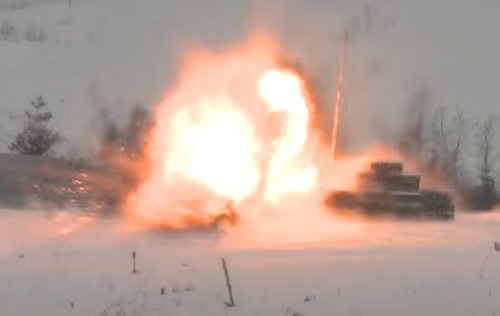
All of these aforementioned bullets are being used to great effect in Ukraine, but they have a weakness in cost. That is why the troops on the ground have the imperative to make the best use of these precious resources. And this is where the reconnaissance UAVs step in!
Thanks to their performance, Moscow's drones, in particular the Orlan-10, end up carrying out a mission of critical importance because, they are able to make the most of both the devastating effects of the areal bombardment of traditional projectiles (of which Russia has practically unlimited stocks) and the precision of the guided projectiles that are thus reserved for high-paying targets. . Hence, the massive use of drones has made Russian artillery, if possible, even more lethal, as Ukrainian front-line infantry have discovered during the last two months of intense fighting in the southern part of the country and in the area. of the Donbass.
Not happy with this, the Russians have also decided to increase the offensive capabilities of their reconnaissance UAVs by installing two small shells, one for each wing, capable of releasing 4 low-power bombs overall. From the study of the videos available on the net, it can be seen that these small-sized bombs are characterized by poor precision and a very low (although not negligible!) Destructive potential, and therefore it would be tempting to declassify the damage they cause overall. as a "minor", but this represents, on the contrary, a serious underestimate! In fact, the real damage is not so much of a material nature as it is psychological because this continuous pressure to which Ukrainian soldiers are subjected night and day, combined with combat stress and lack of sleep (natural consequence of being constantly alert) can lead to during the weeks and months to the erosion of both the morale and the fighting capabilities of the Kiev armed forces.
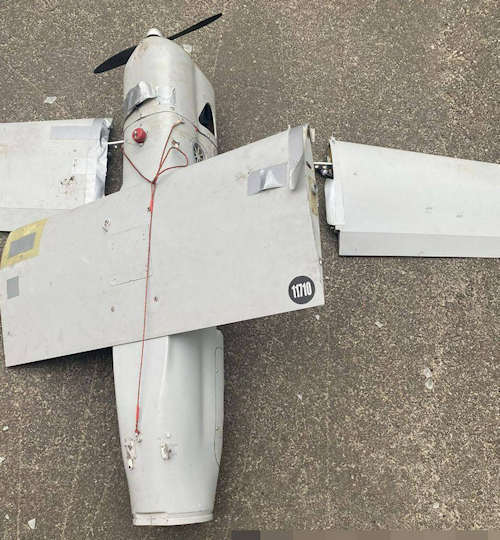 The situation is then made even more complex by the fact that, imitating the Ukrainians themselves, the Russians have begun to use commercial drones on an industrial scale on the battle front, both for reconnaissance missions and to drop rudimentary explosive devices. These drones of the most disparate origins and often donated to the troops at the front by Russian civilians through massive "crowdfunding" campaigns are proving to be indispensable tools both as power multipliers for Russian forces and as additional elements of pressure against Ukrainian forces .
The situation is then made even more complex by the fact that, imitating the Ukrainians themselves, the Russians have begun to use commercial drones on an industrial scale on the battle front, both for reconnaissance missions and to drop rudimentary explosive devices. These drones of the most disparate origins and often donated to the troops at the front by Russian civilians through massive "crowdfunding" campaigns are proving to be indispensable tools both as power multipliers for Russian forces and as additional elements of pressure against Ukrainian forces .
However, it should not be believed that these efforts and results have not been achieved without paying a high price. Without counting the losses of commercial drones, of which no one is really taking into account, starting from the analysis of the photographic and video evidence available online, Western analysts have so far managed to ascertain the loss in combat of 80 Russian UAVs and UCAVs as well. divided: 58 Orlan-10 (photo - of which 56 in the reconnaissance version and 2 for electronic warfare), 3 Orlan-20, 2 Orlan-30, 10 Eleron-3, 2 Takhion, 3 ZALA 421-16E2, 1 Forpost (in the reconnaissance version) and 1 Orion. Of course, these are apparently not insignificant losses, but if we consider the fact that over the last 12 years Russia has produced literally thousands of reconnaissance UAVs of over 20 different models we understand how, even without taking into account the massive influx of commercial drones under popular pressure, Moscow has at its disposal a huge number of assets capable of assisting its artillery and air force in maintaining pressure on the Ukrainians for months in a row until they reach their breaking point.
Another area in which Russian drones have found wide use was that of the suppression of enemy anti-aircraft defenses (SEAD / DEAD), already extensively described in the course of previous updates on the progress of the Russo-Ukraine war. In this type of missions, the Russians have mainly used the target drones built by ENICS such as: the E2M, the E95M, the E22M, the E08M and the E17M, but also several examples of old drones dating back to the time of the Soviet Union have got to stand out in this role as the Lavochkin La-17 (in its La-17M and La-17P variants), the Tupolev Tu-141 “Strizh”, the Tupolev Tu-143 “Reys” and the Tupolev Tu-243 “Reys-D”.
During the early stages of the war, the Russian Air Forces, the V-VS, used swarm attacks consisting of drones of the models listed above to "attract" the Ukrainian anti-aircraft defenses, then attacking them with various types of anti-radiation missiles launched by aircraft with red star. Anyone wishing to read the technical descriptions of the Russian SEAD / DEAD operations in more detail is requested to read my old update analysis of the early stages of the current conflict.
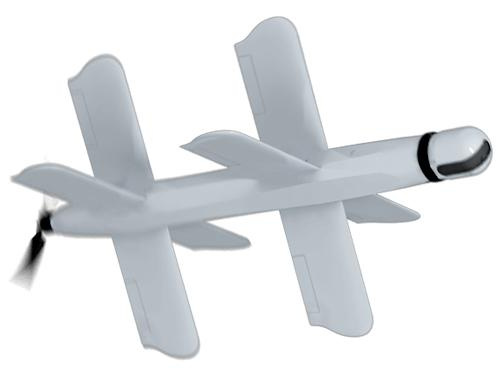 The Russians also used similar tactics against backed-up anti-aircraft missiles (MANPADS) such as Stinger or starstreak using the JSC CSTS Technodinamika VTOL drone-helicopter.
The Russians also used similar tactics against backed-up anti-aircraft missiles (MANPADS) such as Stinger or starstreak using the JSC CSTS Technodinamika VTOL drone-helicopter.
Finally, our narrative could not be complete without taking into account the role played since the beginning of the conflict until now by Russian circulating munitions (better known by their English name of "loitering munitions") of the type ZALA Kub-BLA, ZALA Lancet-1 and ZALA Lancet-3 (photo).
Experimented for the first time in the Syrian theater of war in the years between 2018 and 2020 and refined precisely starting from the data collected in this context, the Kub-BLAs, the Lancet-1 and Lancet-3 they are now seeing their first massive deployment against both fixed and mobile targets in Ukraine, generally in collaboration with reconnaissance UAVs that transmit target data which then become the subject of suicide missions by these "kamikaze drones".
At the beginning of the war, the Ukrainians found a number of Russian circulating ammunition near a series of targets, mainly located in the Kiev area.
From the photos published online it was clear that the fuses of the explosive charges placed in the "body" of the small drones were badly calibrated and that they failed to explode on impact.
Ukrainians took the ball by deciding to post pictures of unexploded Russian circulating ammunition online for propaganda purposes to ridicule the war machine and the performance of Russian weapons.
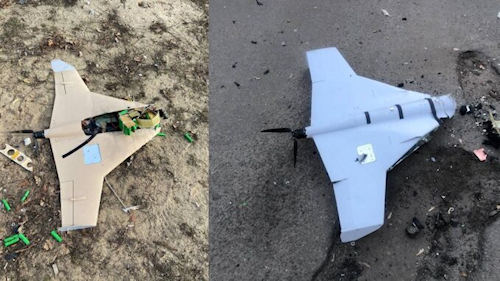 Too bad that at this juncture the media operation (photo) was resolved in a spectacular "master stroke of the imbecile" because right from the publication of these photos, the Russians were able to understand what had been the defect in the calibration of the fuzes, which they were in fact modified and from that moment they began to explode and how!
Too bad that at this juncture the media operation (photo) was resolved in a spectacular "master stroke of the imbecile" because right from the publication of these photos, the Russians were able to understand what had been the defect in the calibration of the fuzes, which they were in fact modified and from that moment they began to explode and how!
The deadly Ukrainian blunder at this juncture finds its historical echo in a similar nonsense that the British media committed at the time of the Falklands / Malvinas War when they literally revealed worldwide that the bombs dropped by Argentine fighter-bombers were badly calibrated and exploded only afterwards. which had passed through the British ships from side to side without causing excessive damage. The Argentine pilots, gunsmiths and mechanics took notice, and in the following weeks it was painful for the British.
We have thus finished our narration regarding the developments recorded up to now by the "war of the Russian drones" which, while not making headlines, are nevertheless performing an invaluable task as power multipliers, especially in reconnaissance and shooting. artillery, and predictably they will continue to do so until hostilities cease, sooner or later they arrive.
Photo: Russian Federation MoD / ShinePhantom / Twitter / ZALA AERO GROUP / web

